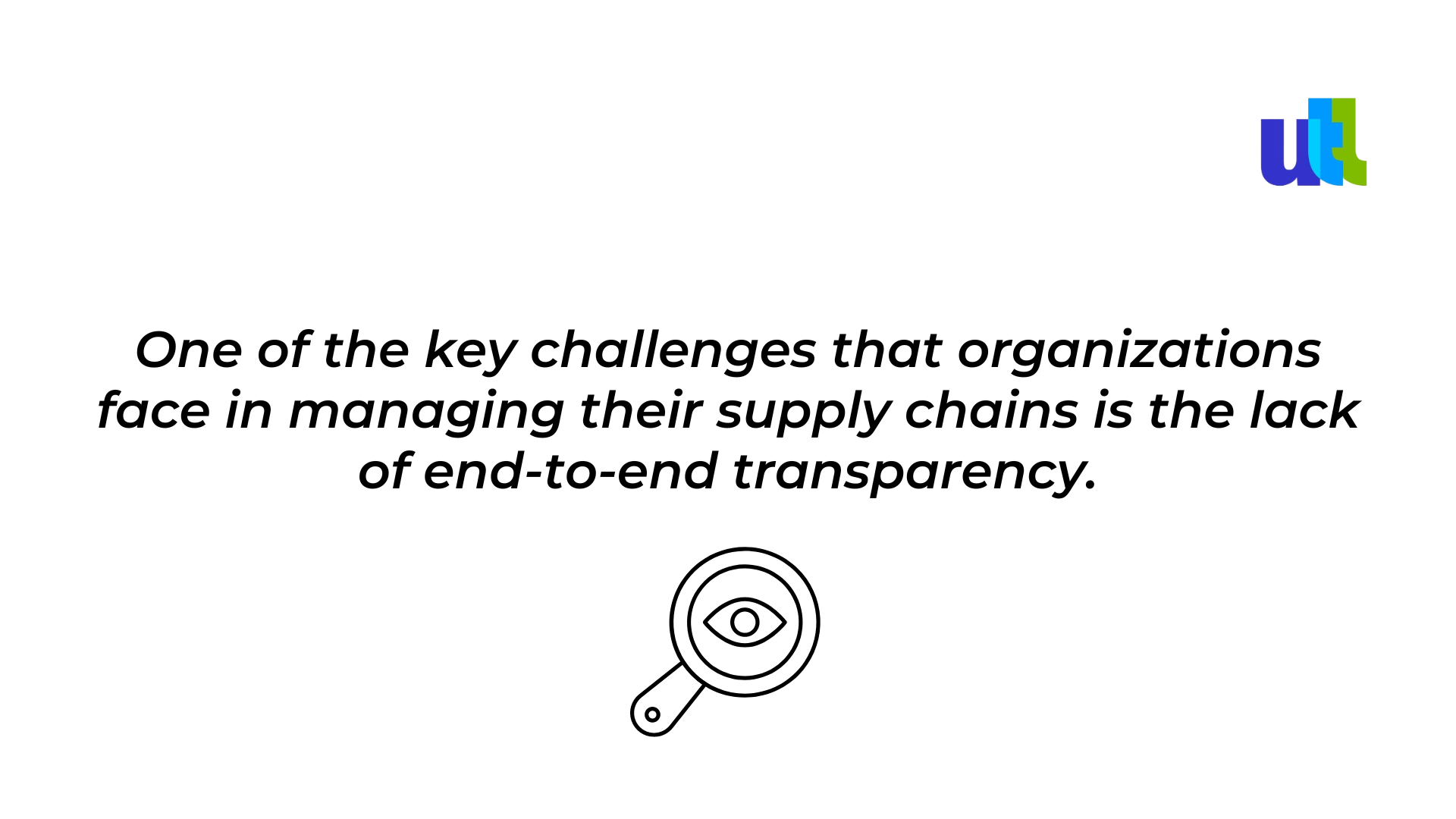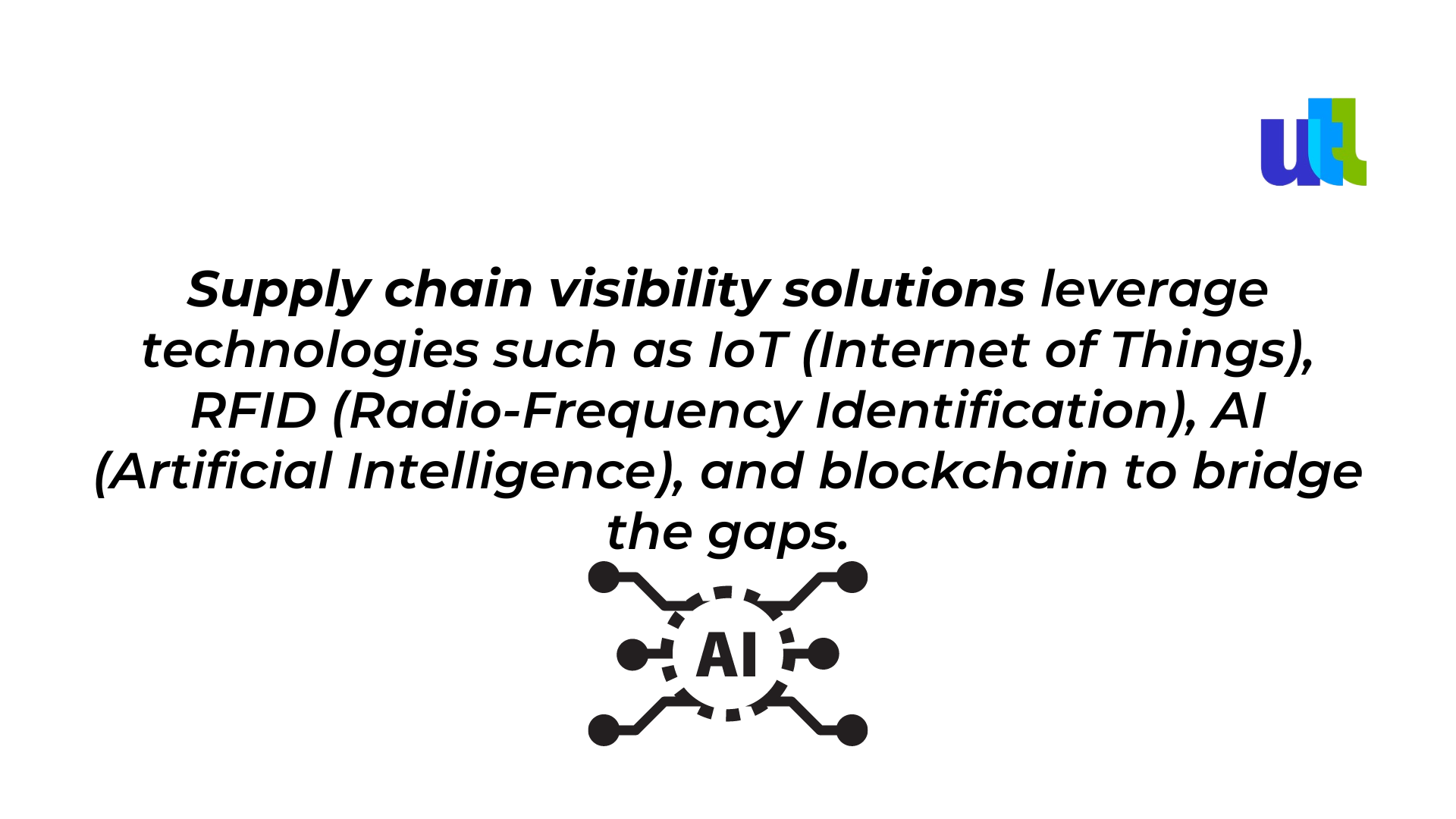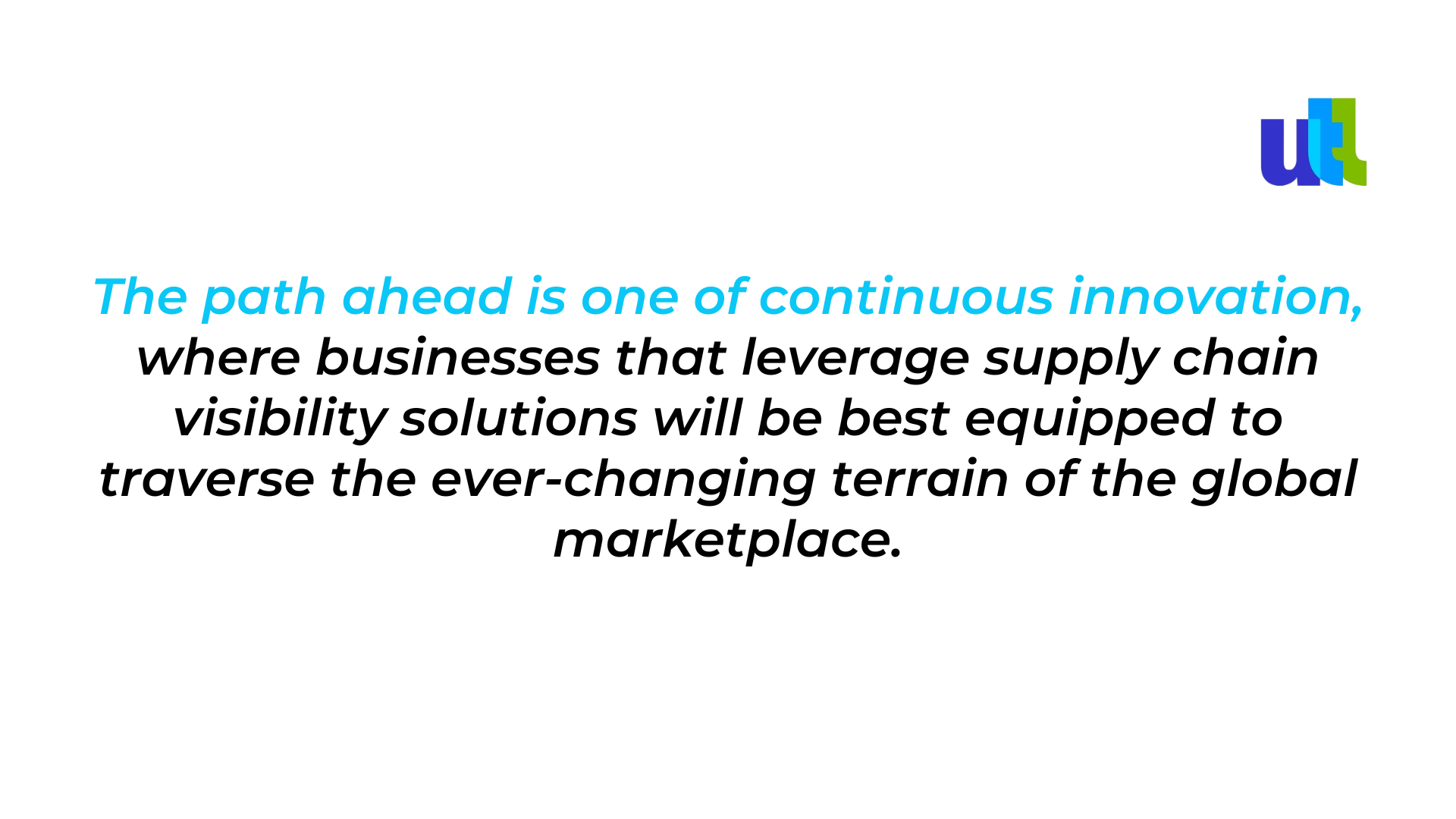In the era where global commerce thrives and consumer expectations continue to evolve, the importance of a well-orchestrated supply chain cannot be overstated. The journey from raw materials to the final product's delivery is complex, involving numerous stakeholders, processes, and potential pitfalls. This is where supply chain visibility solutions emerge as a game-changer, offering a beacon of transparency and efficiency that can revolutionize the modern supply chain landscape.
Industries no longer function within national boundaries. Products are sourced from one corner of the world, manufactured in another, and delivered to a third. This complexity demands a holistic view, from raw material extraction to the consumer's hands.
Today, we invite you to explore supply chain visibility solutions - the compass guiding businesses through complexities and uncertainties, ultimately fostering resilience and adaptability.
Supply chain visibility solutions encompass a range of technological tools and strategies designed to provide real-time insights into the movement of goods, materials, and information across the entire supply chain ecosystem. Such solutions offer a comprehensive overview of each step, from procurement and production to distribution and delivery, enabling businesses to make informed decisions and respond to disruptions effectively.

Traditional supply chain models often involve multiple intermediaries, handoffs, and information silos, leading to limited visibility. This blind spot can result in inefficiencies, delays, and increased operational costs.
The pillars of supply chain visibility
At its core, supply chain visibility hinges on three pillars: transparency, predictability, and collaboration. These pillars are upheld by a variety of technological enablers, including IoT devices, RFID tags, AI-powered analytics, blockchain, and cloud computing.
Each of these technologies contributes to the holistic picture of the supply chain, enabling businesses to gain insights into inventory levels, production status, transportation routes, and potential bottlenecks.

IoT devices and RFID tags, for instance, can be embedded in products and packaging, allowing companies to track their location, temperature, and condition in real-time. This data can be collected and analyzed using AI algorithms, with predictive analytics and proactive decision-making. By integrating blockchain, a secure and tamper-proof ledger, supply chain stakeholders can record and verify each transaction, enhancing trust and traceability.
One of the pioneers in supply chain visibility was Walmart. It embraced the technology to trace the journey of its products from farm to shelf. By utilizing blockchain and IoT devices, they improved food safety and traceability. In cases of recalls or contamination concerns, Walmart can now swiftly pinpoint the affected products, minimizing waste and protecting consumer trust.
Another great example is Zara. Renowned for its fast fashion, the company leveraged supply chain visibility solutions to maintain agility. With RFID tags and real-time inventory tracking, they can adjust production based on real-time demand, minimizing overstock and markdowns.
Such real-life cases actually illustrate that supply chain visibility solutions are not just buzzwords; they are driving transformation across industries.
Supply chain resilience through clearer horizons. Key points
Supply chain visibility solutions are not merely a trend; they are an imperative for modern businesses.
1. The genesis of visibility solutions
At first, supply chain visibility solutions emerged as a response to the challenges posed by globalization. The traditional linear supply chain model was no longer sufficient, given the rise in demand volatility, increased outsourcing, and intricate networks.
The genesis of visibility solutions was rooted in the need to gain end-to-end transparency, optimize processes, and respond proactively to disruptions.
2. Navigating disruption and building resilience
Recent global events, from natural disasters to supply chain interruptions, have highlighted the importance of supply chain resilience. Visibility solutions empower businesses to identify vulnerabilities, map alternate routes, and respond promptly to disruptions.
With real-time insights, companies can take pre-emptive measures to minimize the impact of unforeseen events, ensuring continuous operations and customer satisfaction.
3. Customization and personalization
As customer expectations continue to evolve, supply chain visibility solutions play a pivotal role in delivering customized experiences. Businesses can track customer preferences, analyze purchase patterns, and tailor offerings accordingly. This personalized approach enhances customer loyalty and drives demand forecasting accuracy.
4. Sustainability and ethical sourcing
Modern consumers demand transparency not only in the products they buy but also in the processes that bring those products to market.
Supply chain visibility solutions provide a window into ethical sourcing practices, allowing consumers to make informed choices. This, in turn, encourages businesses to adopt sustainable practices throughout their supply chains.
5. A shift from reaction to proaction
Traditional supply chain models often operated in a reactive mode - addressing issues as they arose. However, visibility solutions usher in a shift towards proactive decision-making. With real-time data and predictive analytics, businesses can anticipate challenges and optimize processes well in advance.
They provide the tools needed to navigate the complexities of global commerce, build resilience in the face of uncertainty, and offer transparency that aligns with ethical and sustainable values.
The benefits of robust supply chain visibility are manifold
First and foremost, it enhances operational efficiency. With real-time insights into inventory levels, production progress, and transportation status, companies can optimize their processes, minimize excess inventory, and reduce lead times. This agility is particularly crucial in industries where demand volatility is high.
Moreover, supply chain visibility solutions empower companies to mitigate risks effectively. Disruptions, whether due to natural disasters, geopolitical events, or supplier issues, can be swiftly identified and alternative strategies can be implemented. This proactive approach minimizes the impact of disruptions on customer satisfaction and the bottom line.
Customer expectations have also evolved in the digital age, where transparency is paramount. Supply chain visibility solutions allow companies to share accurate and up-to-date information about a product's journey with customers. This not only enhances trust but also provides a competitive edge, as customers are more likely to choose brands that offer transparency and reliability.
And what about the challenges?
Of course, adopting supply chain visibility solutions isn't without its challenges. Implementation requires investment in technology, training, and potentially reengineering processes.
Integration with existing systems and cooperation among various stakeholders can also pose hurdles. Nonetheless, the potential long-term benefits far outweigh the initial costs, as the visibility gained can transform supply chains from cost centers to value drivers.
Future directions
The journey of supply chain visibility solutions is an ongoing evolution. As technology advances, we can expect even greater integration of AI and machine learning, enabling more accurate demand forecasting and dynamic supply chain orchestration. Furthermore, increased collaboration across supply chain stakeholders will lead to the creation of interconnected ecosystems.

In conclusion
Supply chain visibility solutions are reshaping the dynamics of modern business. By harnessing the power of IoT, AI, blockchain, and other technologies, organizations can usher in a new era of transparency, efficiency, and resilience.
These solutions leverage real-time data to inform decisions, be it adjusting production based on demand patterns or rerouting shipments to avoid disruptions. This data-driven approach minimizes inefficiencies and enables businesses to respond swiftly to market shifts.
“As technology continues its inexorable advance, businesses that wield the power of supply chain visibility will stand at the forefront of transformation, crafting a harmonious symphony of success. And we are proud of being able to support and navigate them along the way”. ~Utah Tech Labs
For free consultation on supply chain visibility solutions, click here.
----------------------------------------------------------------------------------------------
View the full presentation:
WRITTEN BY
Sofia Kutko
2023-09-06
































































































































































































